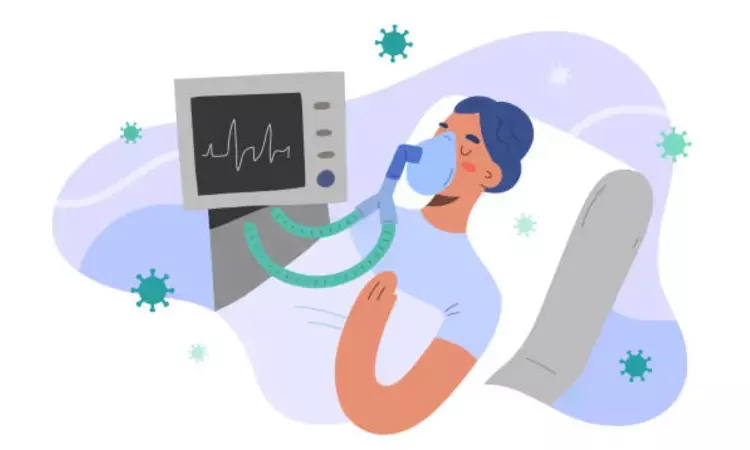- Home
- Medical news & Guidelines
- Anesthesiology
- Cardiology and CTVS
- Critical Care
- Dentistry
- Dermatology
- Diabetes and Endocrinology
- ENT
- Gastroenterology
- Medicine
- Nephrology
- Neurology
- Obstretics-Gynaecology
- Oncology
- Ophthalmology
- Orthopaedics
- Pediatrics-Neonatology
- Psychiatry
- Pulmonology
- Radiology
- Surgery
- Urology
- Laboratory Medicine
- Diet
- Nursing
- Paramedical
- Physiotherapy
- Health news
- Fact Check
- Bone Health Fact Check
- Brain Health Fact Check
- Cancer Related Fact Check
- Child Care Fact Check
- Dental and oral health fact check
- Diabetes and metabolic health fact check
- Diet and Nutrition Fact Check
- Eye and ENT Care Fact Check
- Fitness fact check
- Gut health fact check
- Heart health fact check
- Kidney health fact check
- Medical education fact check
- Men's health fact check
- Respiratory fact check
- Skin and hair care fact check
- Vaccine and Immunization fact check
- Women's health fact check
- AYUSH
- State News
- Andaman and Nicobar Islands
- Andhra Pradesh
- Arunachal Pradesh
- Assam
- Bihar
- Chandigarh
- Chattisgarh
- Dadra and Nagar Haveli
- Daman and Diu
- Delhi
- Goa
- Gujarat
- Haryana
- Himachal Pradesh
- Jammu & Kashmir
- Jharkhand
- Karnataka
- Kerala
- Ladakh
- Lakshadweep
- Madhya Pradesh
- Maharashtra
- Manipur
- Meghalaya
- Mizoram
- Nagaland
- Odisha
- Puducherry
- Punjab
- Rajasthan
- Sikkim
- Tamil Nadu
- Telangana
- Tripura
- Uttar Pradesh
- Uttrakhand
- West Bengal
- Medical Education
- Industry
Sepsis and longer vasopressor support, risk factors for Ventilator Associated Events: Study

In the future more in-depth research regarding intervention strategies is necessary to confirm if the risk factors identified for ventilator-associated events can be managed with various interventions including conservative fluid management, suggests a study published in the Journal of Critical Care.
Generally, Invasive Mechanical ventilation (IMV) is commonly used as life support for severely ill intensive care unit (ICU) patients
So, ventilator-associated respiratory infections (VARIs) may be showcased either as ventilator-associated tracheobronchitis (VAT) or ventilator-associated pneumonia (VAP).
There is limited data available in India regarding the clinical course and
outcome in mechanically ventilated critically ill intensive care unit
(ICU) patients, using the new VAE surveillance definition. The
most crucial clinical complications linked with long-term mechanical ventilation are longer lengths of hospital stay, significant morbidity, increased death rates, more antibiotic consumption and
increased healthcare costs. The majority of the data from developing countries including India include respiratory complications as ventilator-associated pneumonia (VAP). Also, there are many studies on risk factors and strategies to prevent VAP, however, their applicability to Ventilator-Associated Events (VAE) in Indian settings is still not known clearly.
A study was conducted by a group of researchers from Lucknow, India, to recognize the modifiable risk factors associated with VAE. While they also aimed at investigating the course of ICU and the impact of VAE on patient outcomes.
The researchers conducted a prospective, observational single-center cohort study. They selected a total of 247 patients on mechanical ventilation for 4 calendar days at a 20-bed ICU between January 2018 to June 2019.
The results of the study are as follows:
· VAE occurred in 59 episodes, while the Ventilator Utilization Ratio (VUR) was 0.57.
· The median time of VAE onset was 6 days, with sepsis being the main cause for patients on invasive mechanical ventilation (IMV).
· Cumulative fluid balance ≥2 l and greater number of days with vasopressor support within 7 days of initiating IMV were significant risk factors for acquiring VAE.
· VAE cases were ventilated for significantly more days, had longer days of ICU stay and higher hospital mortality.
· Klebsiella pneumonia was the most common isolate and 32.1% were colistin-resistant.
Thus, the researchers concluded that through their study cohort they were able to identify potentially modifiable risk factors associated with ventilator associated events VAEs. Sepsis was the most common reason for initiating patients on invasive mechanical ventilation (IMV).Klebsiella pneumonia was the most common isolate and 32.1% were colistin-resistant.
They can be potential targets for intervention including conservative fluid management. So, prospective intervention studies are required to investigate whether strategies targeting these risk factors can reduce VAE rates and improve patient outcome.
Reference:
A study titled, "Evaluation of ventilator-associated events in critically ill patients with
invasive mechanical ventilation: A prospective cohort study at a resource-limited setting in Northern India" by Patnaik R et. al published in Journal of Critical Care
https://doi.org/10.1016/j.jcrc.2021.03.001
Dr. Shravani Dali has completed her BDS from Pravara institute of medical sciences, loni. Following which she extensively worked in the healthcare sector for 2+ years. She has been actively involved in writing blogs in field of health and wellness. Currently she is pursuing her Masters of public health-health administration from Tata institute of social sciences. She can be contacted at editorial@medicaldialogues.in.
Dr Kamal Kant Kohli-MBBS, DTCD- a chest specialist with more than 30 years of practice and a flair for writing clinical articles, Dr Kamal Kant Kohli joined Medical Dialogues as a Chief Editor of Medical News. Besides writing articles, as an editor, he proofreads and verifies all the medical content published on Medical Dialogues including those coming from journals, studies,medical conferences,guidelines etc. Email: drkohli@medicaldialogues.in. Contact no. 011-43720751


